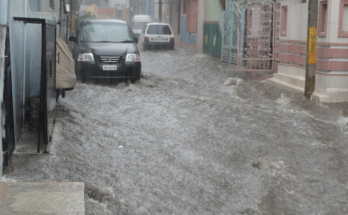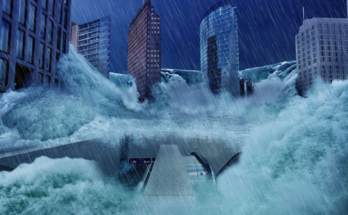Residential Flood Insurance: Floods are among the most destructive natural disasters, capable of causing significant damage to homes, personal belongings, and entire communities. Despite their devastating impact, many homeowners remain unprepared for the financial consequences of flooding. Residential flood insurance is a critical tool for protecting your home and assets from flood-related damages. In this comprehensive guide, we will explore what residential flood insurance is, why it is essential, the types of coverage available, how it works, and how to choose the right policy for your needs.
What Is Residential Flood Insurance?
Residential flood insurance is a type of insurance policy designed to provide financial protection for homeowners in the event of a flood. Flood insurance covers damages caused by rising water levels due to natural events such as heavy rainfall, storm surges, melting snow, or river overflow. This insurance is separate from standard homeowners insurance, which typically does not cover flood-related damages.
Residential flood insurance can be purchased through two primary sources:
- National Flood Insurance Program (NFIP): Managed by the Federal Emergency Management Agency (FEMA), the NFIP provides federally backed flood insurance to homeowners, renters, and businesses in participating communities.
- Private Flood Insurance: Offered by private insurance companies, this type of flood insurance provides an alternative to NFIP policies, often with higher coverage limits and additional benefits.
Why Is Residential Flood Insurance Important?
Flooding can happen anywhere, not just in high-risk areas. Here are some key reasons why residential flood insurance is essential:
- High Costs of Flood Damage: According to FEMA, just one inch of water in a home can cause up to $25,000 in damage. Flood insurance can help cover these costs, reducing the financial burden on homeowners.
- Increasing Flood Risks: Climate change, urban development, and deforestation have increased the frequency and severity of flooding events. Even areas previously considered low-risk are now experiencing flooding.
- Mortgage Requirements: For homes located in high-risk flood zones, flood insurance is often required by mortgage lenders as a condition for loan approval.
- Limited Federal Aid: Federal disaster assistance is only available after a presidential disaster declaration, and it often comes in the form of loans that must be repaid. Flood insurance provides guaranteed financial support for covered damages.
- Peace of Mind: Knowing that your home and belongings are protected can provide peace of mind, allowing you to focus on recovery in the event of a flood.
What Does Residential Flood Insurance Cover?
Flood insurance typically includes two main types of coverage:
1. Building Property Coverage
This coverage protects the physical structure of your home and its essential systems. It includes:
- Foundation, walls, and floors
- Electrical and plumbing systems
- HVAC systems (heating, ventilation, and air conditioning)
- Built-in appliances (e.g., refrigerators, stoves, dishwashers)
- Permanently installed carpeting
- Detached garages (up to 10% of the building property limit)
Coverage limit:
- NFIP policies: Up to $250,000
- Private insurance: Higher limits available
2. Personal Property Coverage
This coverage protects your personal belongings inside the home, such as:
- Furniture and electronics
- Clothing and accessories
- Portable appliances
- Curtains
Coverage limit:
- NFIP policies: Up to $100,000
- Private insurance: Higher limits available
What Is Not Covered by Flood Insurance?
It is essential to understand the limitations of residential flood insurance. Common exclusions include:
- Basement Improvements: Finished walls, floors, and personal belongings stored in basements are generally not covered.
- Outdoor Property: Landscaping, decks, patios, and swimming pools are excluded from coverage.
- Vehicles: Damage to cars and other vehicles is not covered; auto insurance may provide coverage if flood protection is included.
- Additional Living Expenses: Costs for temporary housing and meals are typically excluded from NFIP policies but may be available through private insurers.
- Prevention and Maintenance Costs: Costs associated with flood prevention measures (e.g., sandbags, pumps) are not covered.
How Does Residential Flood Insurance Work?
Flood insurance operates similarly to other types of insurance policies. Here’s how it works:
- Determine Your Flood Risk: Use FEMA’s Flood Map Service Center to determine whether your property is located in a high-risk, moderate-risk, or low-risk flood zone.
- Choose a Provider: Decide between purchasing a policy through the NFIP or a private insurance company. Each option has its advantages depending on your needs.
- Select Coverage Amounts: Determine the amount of building property and personal property coverage you need based on the value of your home and belongings.
- Pay the Premium: Flood insurance premiums vary based on factors such as location, elevation, building characteristics, and coverage amounts. NFIP premiums are standardized, while private insurers use risk-based pricing.
- File a Claim: In the event of a flood, document the damage and file a claim with your insurer. Claims are typically processed within 30-60 days.
How Much Does Residential Flood Insurance Cost?
The cost of flood insurance depends on several factors, including:
- Location: Homes in high-risk flood zones (e.g., FEMA Zones A and V) typically have higher premiums than those in moderate- or low-risk areas.
- Elevation: Homes elevated above the Base Flood Elevation (BFE) may qualify for lower premiums.
- Building Characteristics: The age, construction type, and number of floors of your home can impact premiums.
- Coverage Amounts: Higher coverage limits and lower deductibles result in higher premiums.
- Provider: Private insurers may offer more competitive pricing for certain properties compared to the NFIP.
Average annual premiums:
- NFIP policies: $700-$1,200
- Private insurance: Varies widely based on risk assessment
NFIP vs. Private Flood Insurance
| Feature | NFIP | Private Flood Insurance |
|---|---|---|
| Coverage Limits | $250,000 (building), $100,000 (contents) | Higher or unlimited |
| Policy Customization | Limited | Flexible |
| Waiting Period | 30 Days | Often shorter or none |
| Claims Processing | Slower | Faster |
| Pricing | Standardized | Risk-based |
| Additional Coverage | Limited | Available |
How to Choose the Right Residential Flood Insurance Policy
Selecting the right flood insurance policy requires careful consideration of your needs and circumstances. Follow these steps:
-
- Assess Your Risk: Determine your property’s flood risk using FEMA’s flood maps or by consulting an insurance agent.
- Evaluate Coverage Needs: Consider the value of your home and belongings to determine appropriate coverage amounts.
- Compare Providers: Research both NFIP and private flood insurance options to find the best fit for your budget and coverage requirements.




